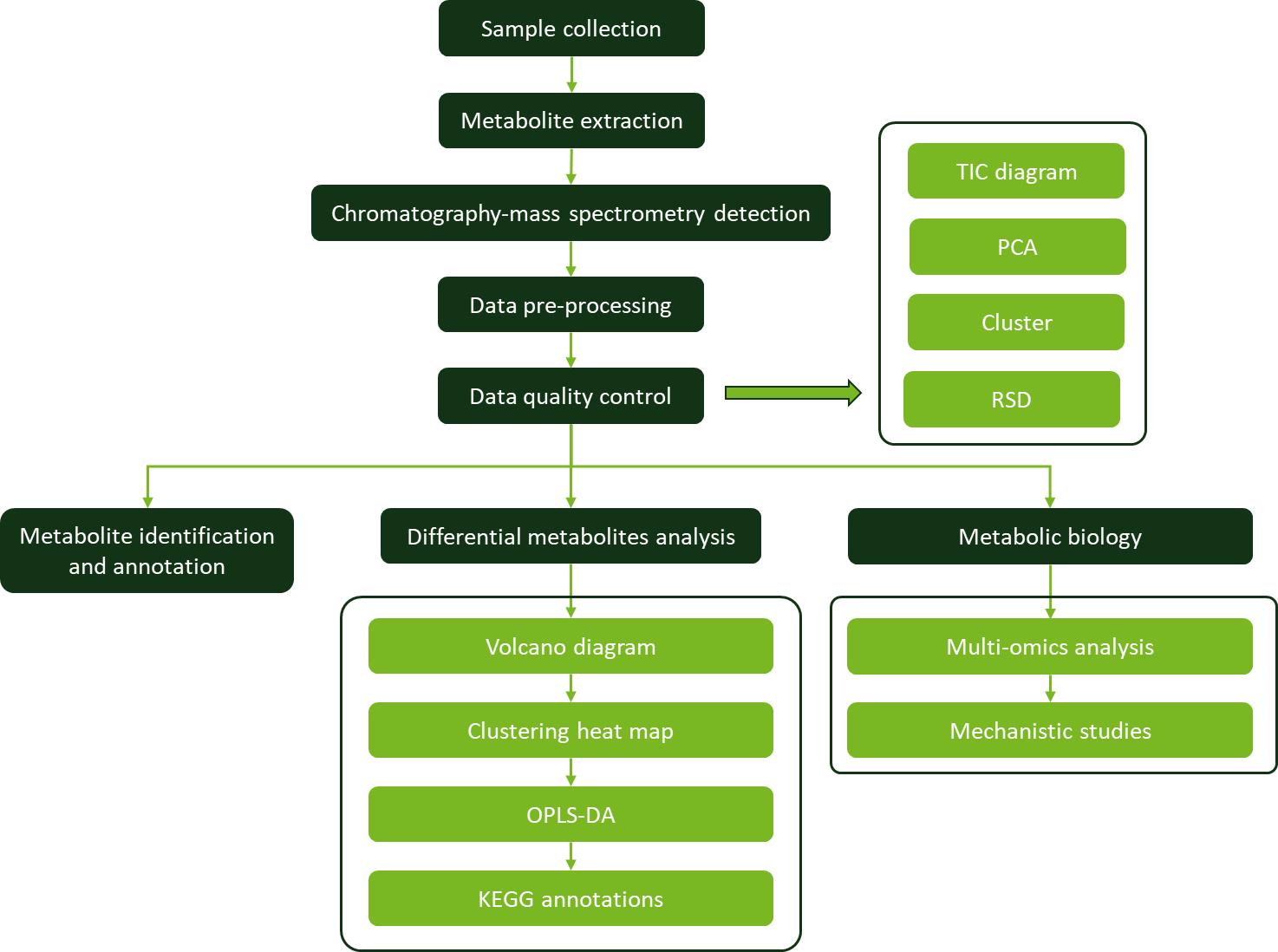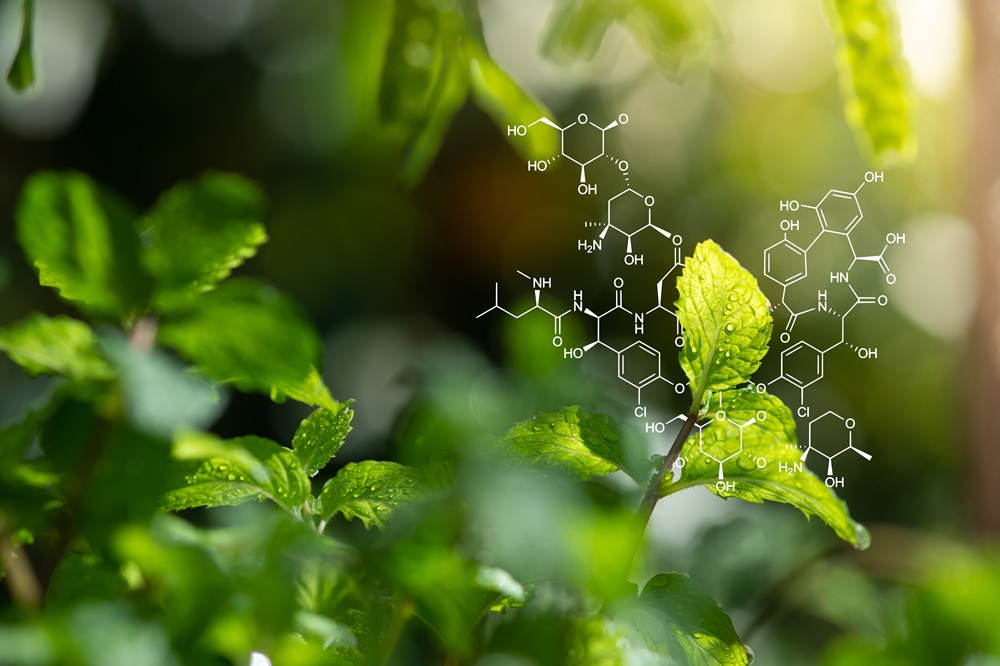What is Geosmin?
Geosmin is an irregular sesquiterpene with the molecular formula C12H22O, is known for its distinctive earthy or musty odor, which is perceptible at extremely low concentrations. Produced primarily by cyanobacteria (blue-green algae) and certain bacteria, geosmin can significantly impact the taste and odor of drinking water, even though it does not pose direct health risks. Accurate analysis of geosmin is essential for monitoring water quality, particularly in surface water sources affected by algal blooms.
Geosmin Analysis is crucial for identifying and quantifying geosmin. Accurate analysis helps ensure water quality, assess contamination levels, and maintain product standards, benefiting industries like environmental monitoring, food safety, and beverage production.
Geosmin Analysis Services by Creative Proteomics
Creative Proteomics provides an extensive range of geosmin analysis services, specifically designed to address the varied requirements of clients across different industries. As part of our plant target metabolomics offerings, these services are tailored to deliver precise and actionable insights. The specific services provided include:
Quantitative Analysis of Geosmin: Accurate measurement of geosmin concentrations in water samples. Applying in monitoring water quality, regulatory compliance, and impact assessment.
Qualitative Geosmin Analysis: Identification and confirmation of geosmin in complex samples. Applying in verification of geosmin presence, purity assessment, and structural elucidation.
Purity and Stability Testing: Assessment of geosmin purity and stability over time. Applying in quality control, product formulation, and stability studies.
Environmental Water Testing: Detection and quantification of geosmin in environmental water sources. Applying in environmental monitoring, assessment of algal bloom impact, and water quality management.
Food and Beverage Testing: Analysis of geosmin in water used in food and beverage production. Applying in quality assurance, flavor consistency, and contamination assessment.
Methods and Instrumentation for Geosmin Analysis
Our geosmin analysis service utilizes cutting-edge techniques and instrumentation to deliver high-precision results:
GC-MS combines the separation capability of gas chromatography with the identification capability of mass spectrometry for the separation and identification of volatile compounds such as geosmin.
Instrumentation:
Gas Chromatograph (GC): Utilizes a capillary column to separate compounds based on their volatility and interaction with the stationary phase.
Mass Spectrometer (MS): Identifies compounds based on their mass-to-charge ratio (m/z) and provides structural information.
LC-MS integrates the advanced separation capabilities of liquid chromatography with the precise identification power of mass spectrometry, ensuring thorough and accurate analysis of geosmin.
Instrumentation:
Liquid Chromatograph (LC): Separates compounds based on their interaction with the stationary phase in a chromatographic column. It is particularly useful for separating complex mixtures.
Mass Spectrometer (MS): Identifies compounds based on their mass-to-charge ratio (m/z). The LC component delivers the separated analytes to the MS for detailed analysis.

Applications of Geosmin Analysis
Drinking Water Quality: Ensures that water treatment facilities can effectively monitor and manage the presence of geosmin to maintain acceptable taste and odor levels.
Environmental Monitoring: Helps in assessing the impact of algal blooms on water sources and informs mitigation strategies.
Food and Beverage Industry: Evaluates the presence of geosmin in water used for food production, ensuring quality and flavor consistency.
Sample Requirements for Geosmin Analysis
| Sample Types |
Volume/Weight Requirements |
Biological Repeat |
| Plant Samples |
Samples from plant material, including leaves, stems, and roots. |
1-5 g |
3-6 |
| Liquid Samples |
Water or liquid samples from various sources including rivers, lakes, and industrial processes. |
1-2 mL |
| Specialty Samples |
Unique or complex samples such as food and beverage products, or environmental extracts. |
0.5-1 g or 0.5-1 mL |
Case. Anti-inflammatory effects of compounds alpha-humulene and (−)-trans-caryophyllene isolated from the essential oil of Cordia verbenacea
Background
The study examines how chlorine affects the analysis of geosmin, 2-methylisoborneol (2-MIB), and methyl tert-butyl ether (MTBE) in drinking water using solid-phase microextraction (SPME). Chlorine, used in water treatment, may interfere with the adsorption of these compounds onto SPME fibers, potentially leading to inaccurate measurement results.
Samples
Water samples spiked with geosmin, 2-MIB, and MTBE.
The samples were prepared with varying concentrations of free chlorine (0, 0.5, and 1.0 mg/L) to simulate different chlorine levels typically found in drinking water.
Technical Methods Procedure
SPME Fibers: Three types of fibers (DVB/CAR/PDMS, PDMS/DVB, CAR/PDMS) were employed for extracting the organic compounds.
Analysis: The compounds were analyzed using gas chromatography-mass spectrometry (GC-MS). The impact of chlorine was evaluated by comparing the concentration of the compounds in chlorinated versus non-chlorinated samples.
Dechlorination: Sodium thiosulfate was used to dechlorinate the samples to assess its effectiveness in reducing chlorine's impact.
Results
Chlorine Impact: The presence of chlorine significantly reduced the observed concentrations of geosmin, 2-MIB, and MTBE, with reductions ranging from 10% to 74%, depending on the chlorine concentration and compound levels.
Dechlorination Effectiveness: Sodium thiosulfate effectively counteracted the effects of chlorine, reducing experimental error to less than 10%.
Field Samples: In field tests, the reduction in 2-MIB concentration was around 10% at lower chlorine levels and up to 76% at higher chlorine levels, consistent with laboratory findings.
 The observed relative concentrations of: (a) 2-MIB, and (b) geosmin at different residual chlorine concentrations using DVB/CAR/PDMS fiber.
The observed relative concentrations of: (a) 2-MIB, and (b) geosmin at different residual chlorine concentrations using DVB/CAR/PDMS fiber.
Reference
- Lin, Tsair-Fuh, et al. "Effect of residual chlorine on the analysis of geosmin, 2-MIB and MTBE in drinking water using the SPME technique." Water Research 37.1 (2003): 21-26.



 The observed relative concentrations of: (a) 2-MIB, and (b) geosmin at different residual chlorine concentrations using DVB/CAR/PDMS fiber.
The observed relative concentrations of: (a) 2-MIB, and (b) geosmin at different residual chlorine concentrations using DVB/CAR/PDMS fiber.



